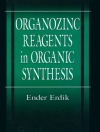Environmental and Agricultural Microbiology
Uniquely reveals the state-of-the-art microbial research/advances in the environment and agriculture fields
Environmental and Agricultural Microbiology: Applications for Sustainability is divided into two parts which embody chapters on sustenance and life cycles of microorganisms in various environmental conditions, their dispersal, interactions with other inhabited communities, metabolite production, and reclamation. Though books pertaining to soil & agricultural microbiology/environmental biotechnology are available, there is a dearth of comprehensive literature on the behavior of microorganisms in the environmental and agricultural realm.
Part 1 includes bioremediation of agrochemicals by microalgae, detoxification of chromium and other heavy metals by microbial biofilm, microbial biopolymer technology including polyhydroxyalkanoates (PHAs) and polyhydroxybutyrates (PHB), their production, degradability behaviors, and applications. Biosurfactants production and their commercial importance are also systematically represented in this part. Part 2 having 9 chapters, facilitates imperative ideas on approaches for sustainable agriculture through functional soil microbes, next-generation crop improvement strategies via rhizosphere microbiome, production and implementation of liquid biofertilizers, mitigation of methane from livestock, chitinases from microbes, extremozymes, an enzyme from extremophilic microorganism and their relevance in current biotechnology, lithobiontic communities, and their environmental importance, have all been comprehensively elaborated. In the era of sustainable energy production, biofuel and other bioenergy products play a key role, and their production from microbial sources are frontiers for researchers. The final chapter unveils the importance of microbes and their consortia for management of solid waste in amalgamation with biotechnology
Audience
The book will be read by environmental microbiologists, biotechnologists, chemical and agricultural engineers.
Despre autor
Bibhuti Bhusan Mishra is working as the ICAR-Emeritus Professor at the P.G. Department of Microbiology, College of Basic Science & Humanities, Odisha University of Agriculture and Technology, Bhubaneswar, Odisha, India. He obtained his Ph D Degree in 1987 from Berhampur University, Odisha. He has more than 60 research publications to his name.
Suraja Kumar Nayak obtained his Ph D from Odisha University of Agriculture and Technology in 2013 and is currently an assistant professor in the Department of Biotechnology, College of Engineering and Technology, Biju Patnaik University of Technology, Bhubaneswar, Odisha, India. His areas of teaching and research include general and environmental microbiology, soil microbiology, industrial & food biotechnology, microbial biotechnology. Dr. Nayak has published 18 scientific papers including book chapters in various journals and national & international books.
Swati Mohapatra is a research Professor in Wankwong University South Korea. She obtained her Ph D in Microbiology from Orissa University of Agriculture and Technology in 2015. Her areas of teaching and research include environmental microbiology, polymer chemistry, industrial and material science, microbial molecular biology, infection biology, agriculture microbiology. Dr. Mohapatra has published 32 scientific articles in various national and international journals and 07 book chapters.
D. P. Samantaray obtained his Ph D in Microbiology (2013) from Utkal University, Bhubaneswar, Odisha, India. He is an assistant professor in the Post Graduate Department of Microbiology, Odisha University of Agriculture and Technology, Bhubaneswar, Odisha. He is working in the field of bioenergy, bioremediation, biopolymer & composite materials including its biomedical and agricultural applications. He has published more than 70 scientific publications.












